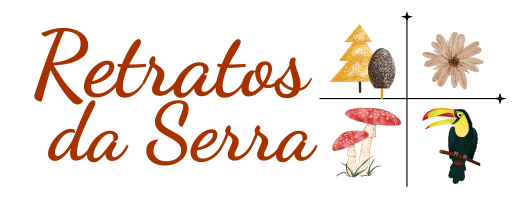There are several mushrooms native to the Atlantic Forest that are edible and delicious, but there’s still a lack of general knowledge about them.
In this post, I will list 10 wild edible mushrooms from the Atlantic Forest biome that I have found here in São Francisco de Paula (Rio Grande do Sul state, Serra Gaúcha region). Many of them occur in other Brazilian biomes as well, such as the Amazon.
Click on the link in the description of each one for more information about the species.
Pleurotus djamor
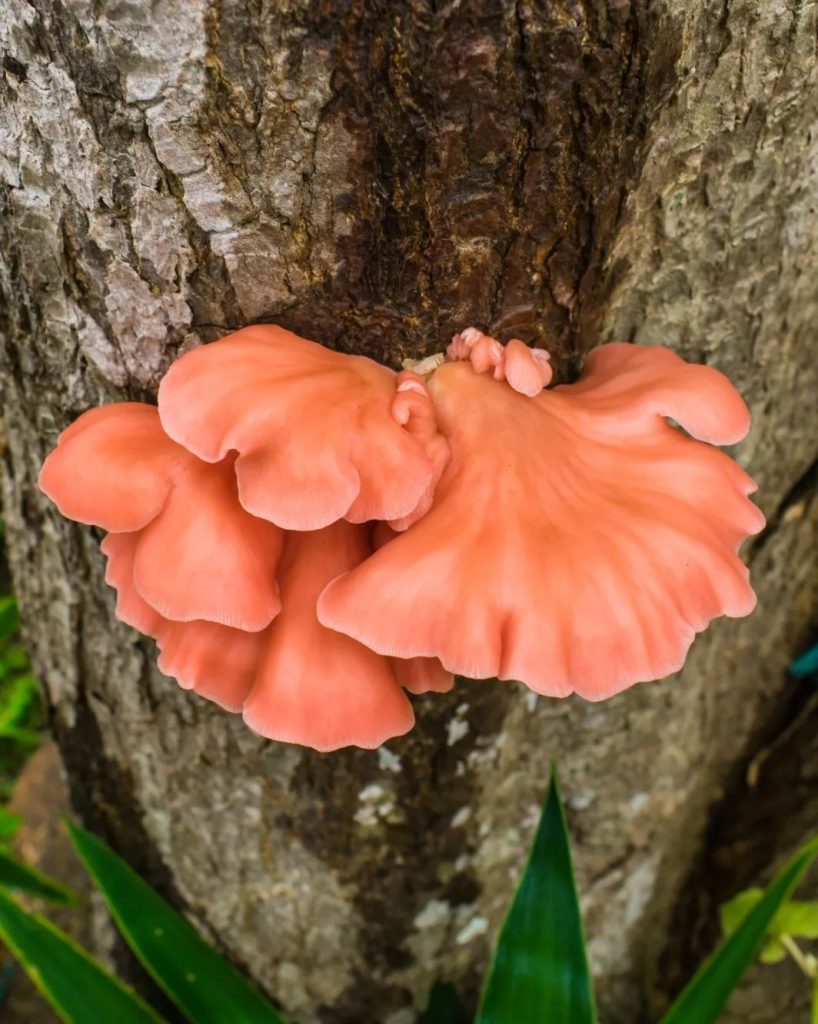
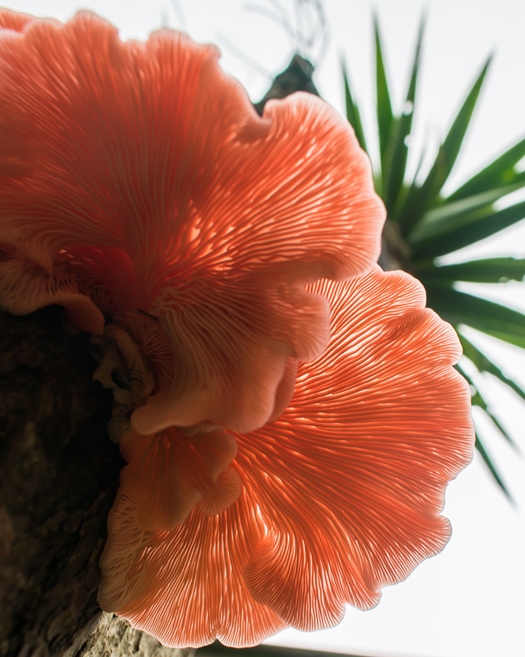
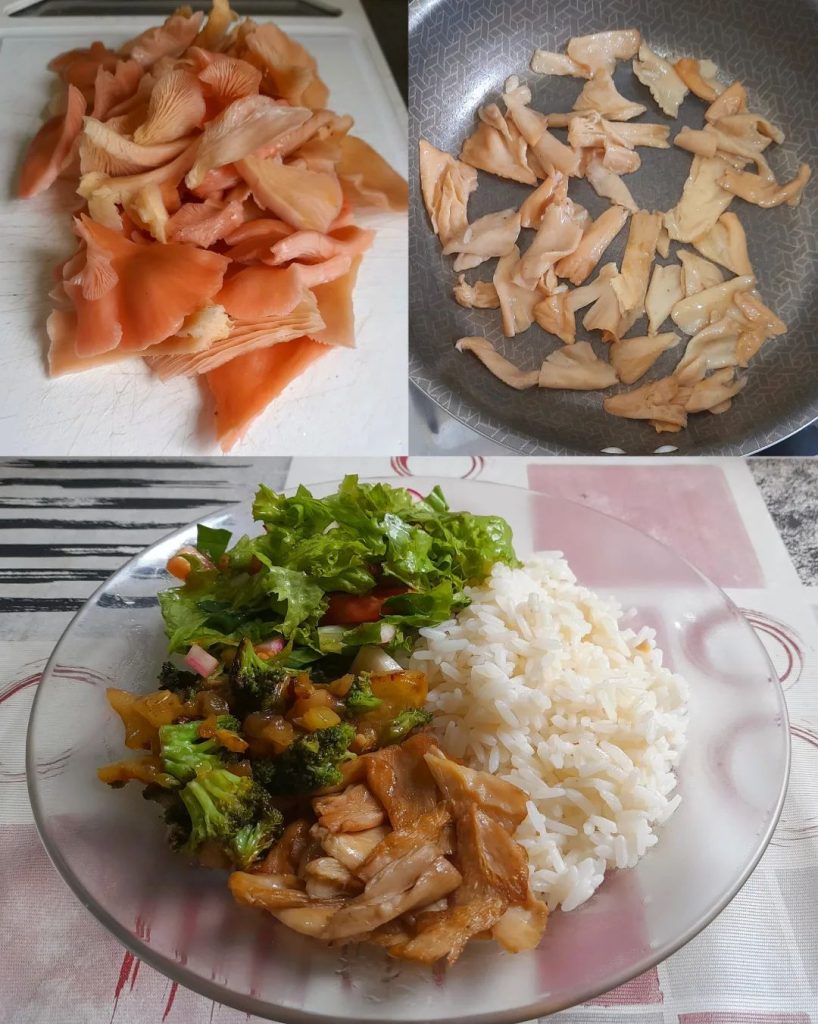
This is the beautiful and delicious Pleurotus djamor, which we by luck found on a Yucca tree in our backyard, in the city center. We hike a lot in preserved areas of forest, but until now it was only on this tree that we found them, and they “sprouted” several times throughout the spring and summer.
Popularly known as the Pink oyster mushroom, it’s also a species that is widely cultivated worldwide and sold commercially.
Pleurotus albidus
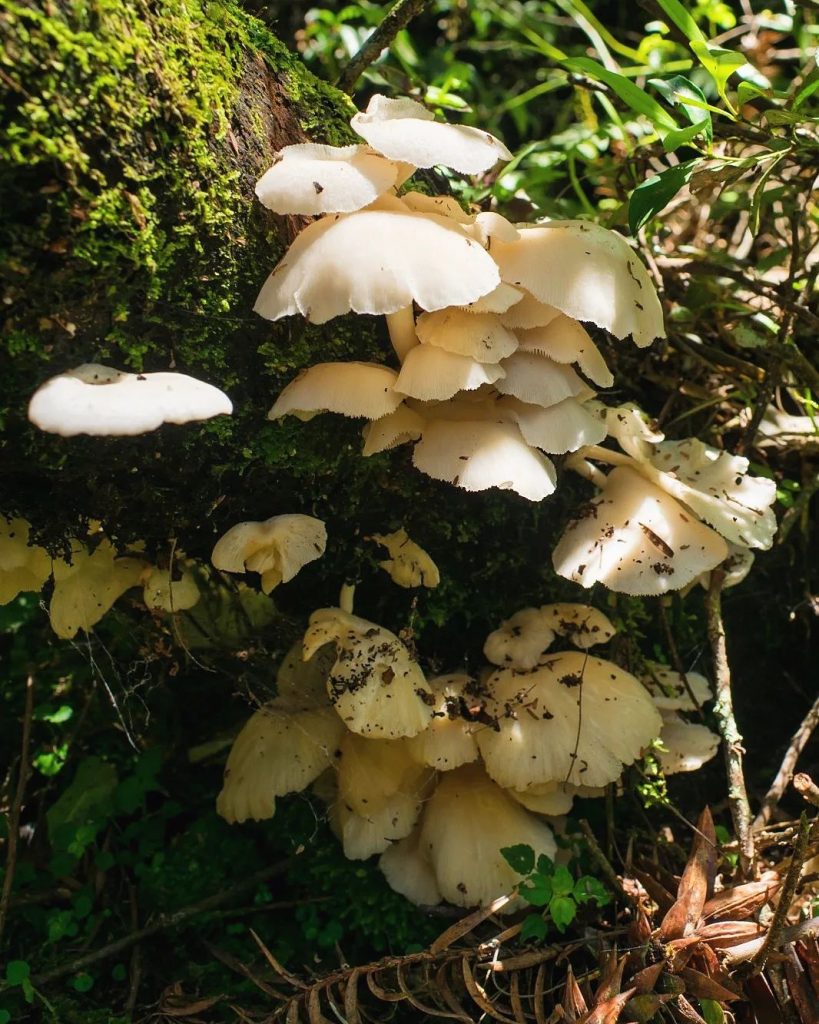
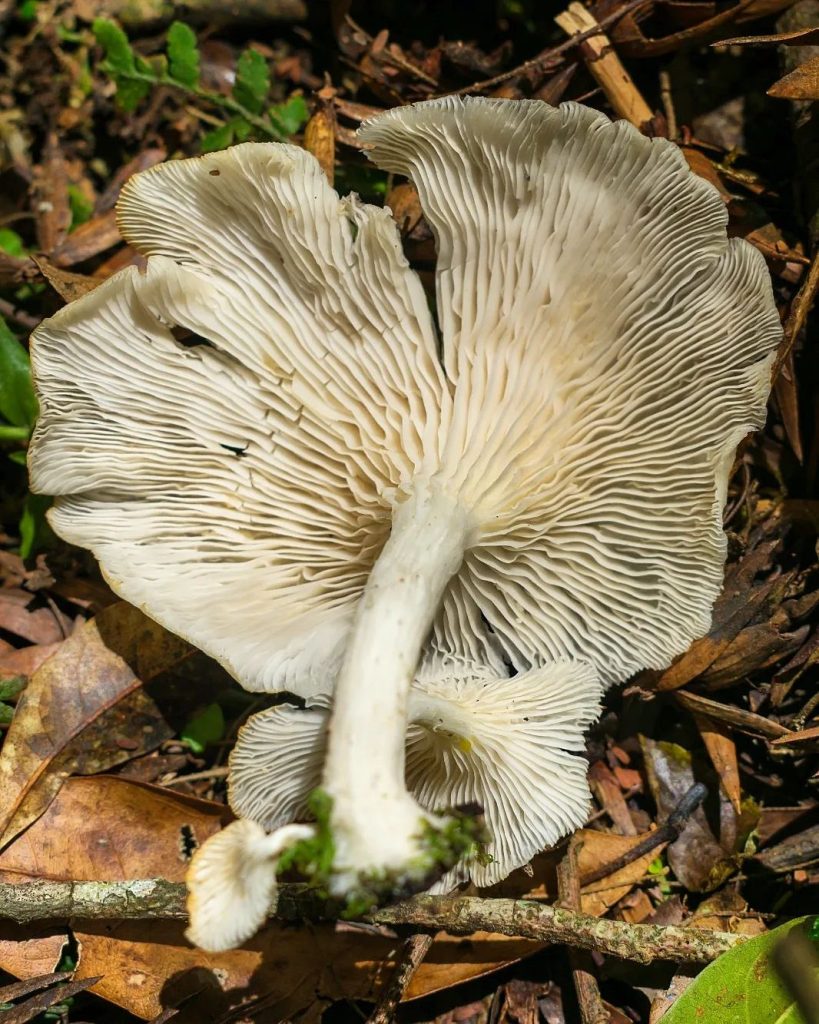
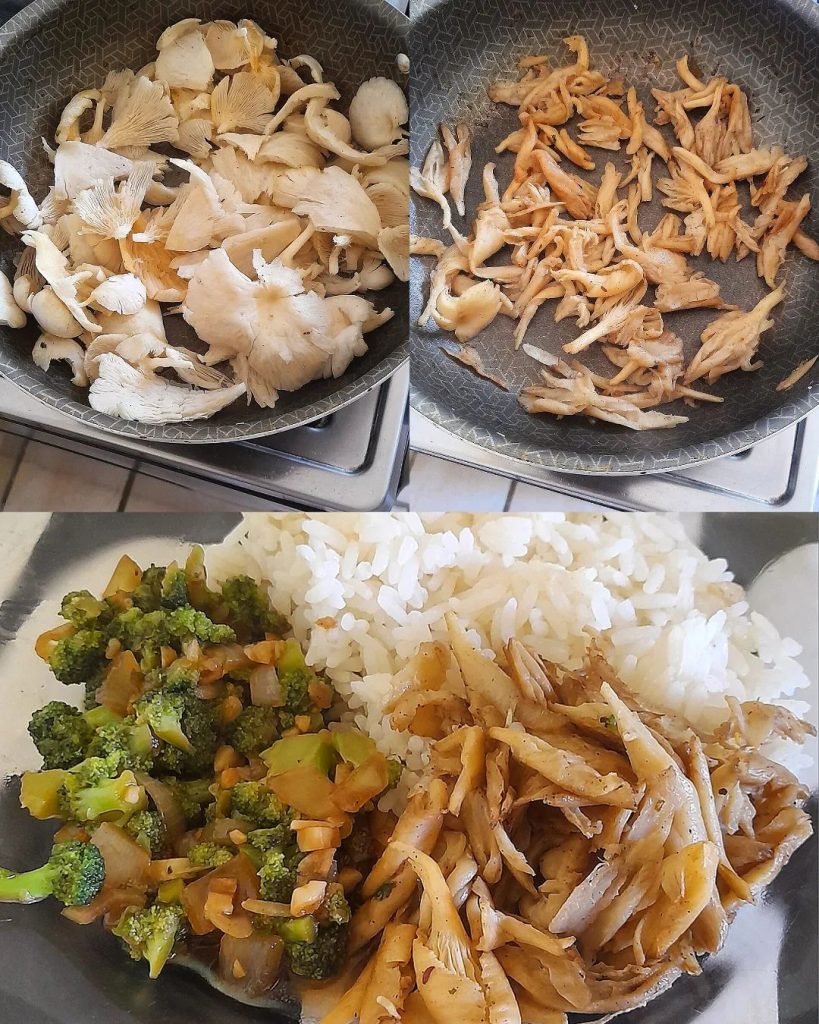
Pleurotus albidus, they are very common around here and they grow basically all year round when conditions are right (mild climate + humidity). It is tasty and versatile, with a mild flavor, one of our favorite mushrooms. We often find them on fallen branches of the Araucaria tree, as here we have the ecoregion of Araucaria moist forests and so they are everywhere.
As most Oyster mushrooms (Pleurotus genus), they have a good texture that remains firm even after being stir fried. Depending on how it is prepared, it can even look like shredded chicken.
Auricularia fuscosuccinea
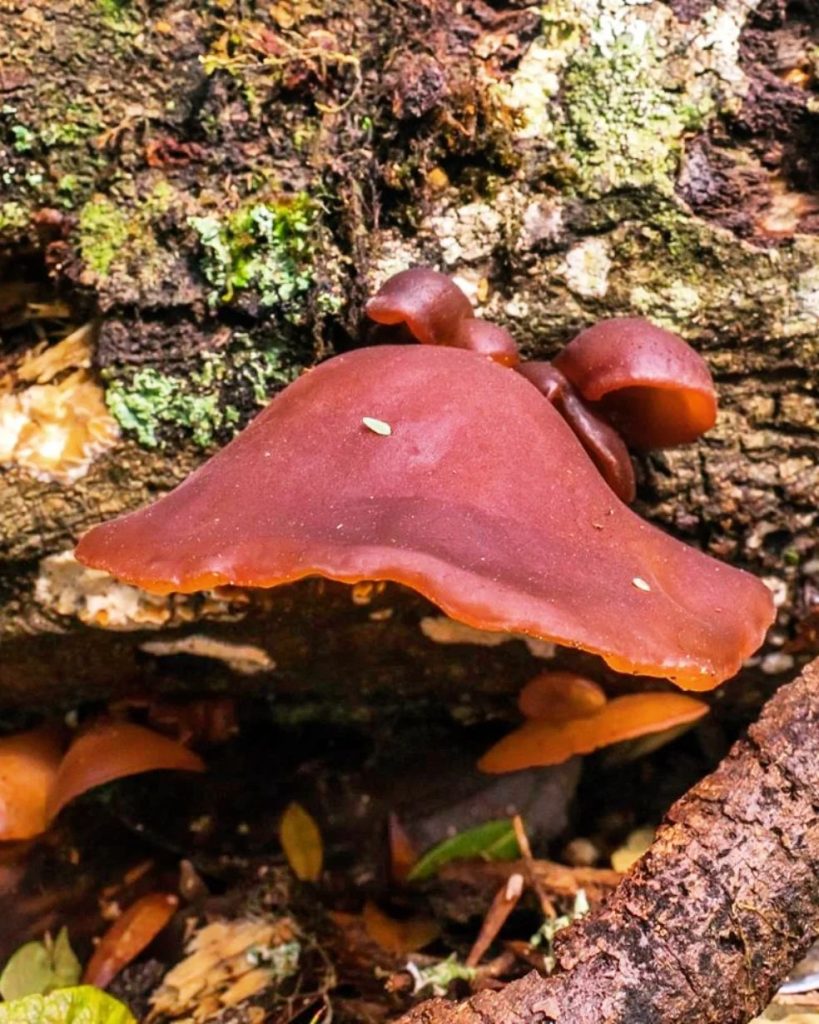
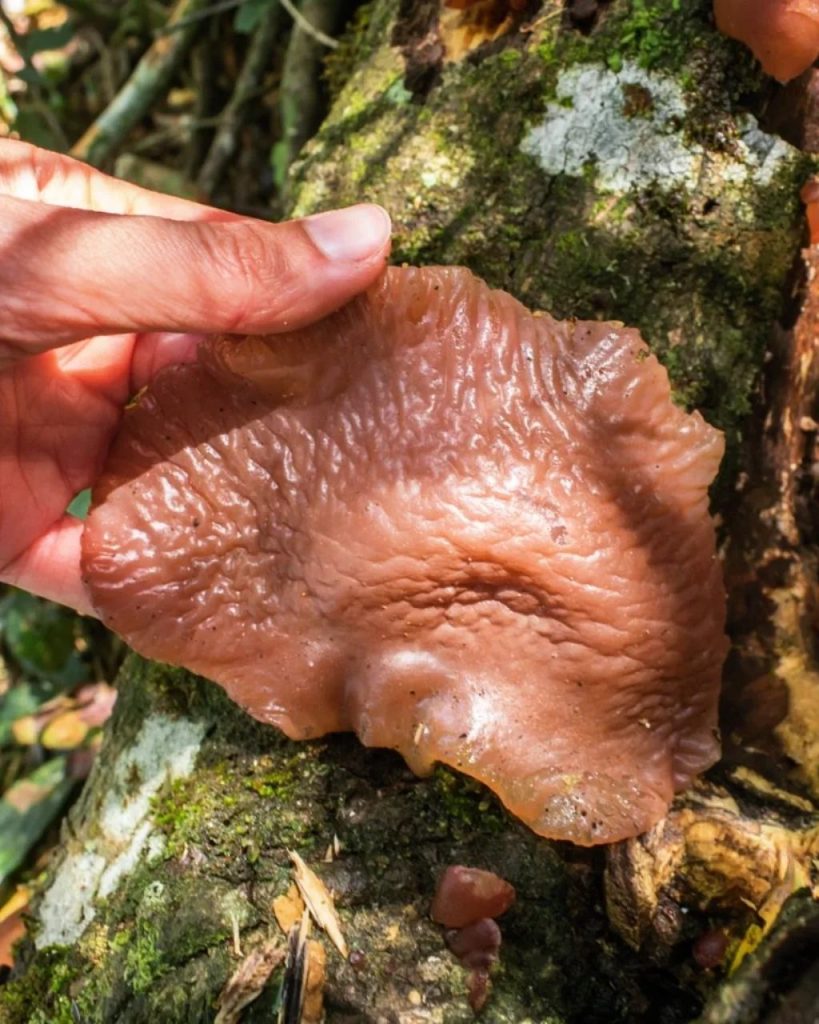

A very different mushroom, with a cartilage texture, that looks like an ear growing on trunks and branches. Auricularia fuscosuccinea and other species of the same genus are edible and easy to recognize.
It doesn’t have much flavor, it’s generally appreciated for its different texture, and it ends up absorbing the seasoning of choice. It often grows quite abundantly and they are very common around here mainly in the Spring and Summer. Also known as Jelly ear, Wood ear or Jew’s ear, among other common names.
Favolus brasiliensis
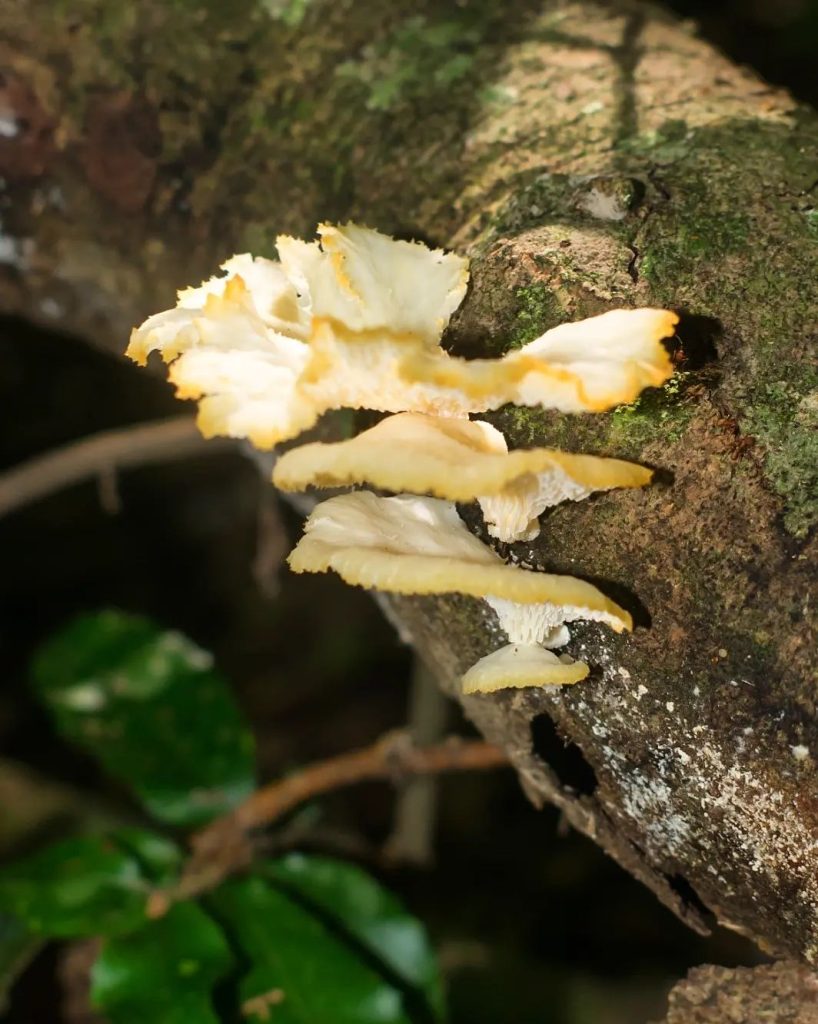
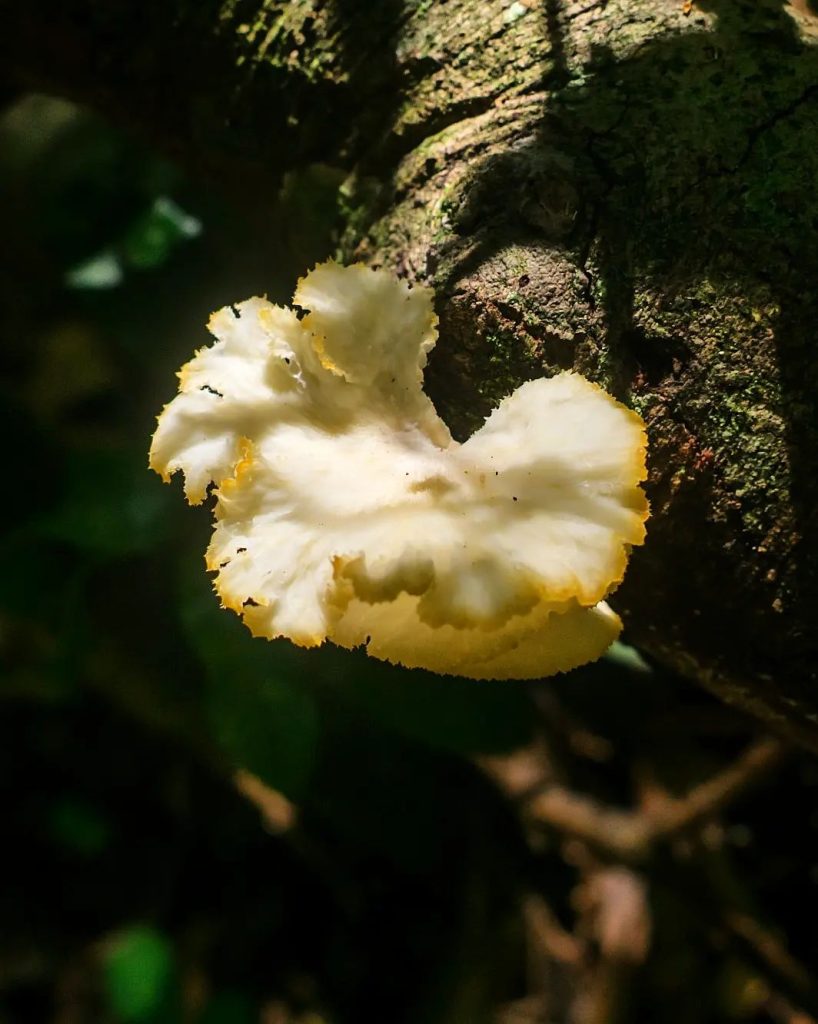
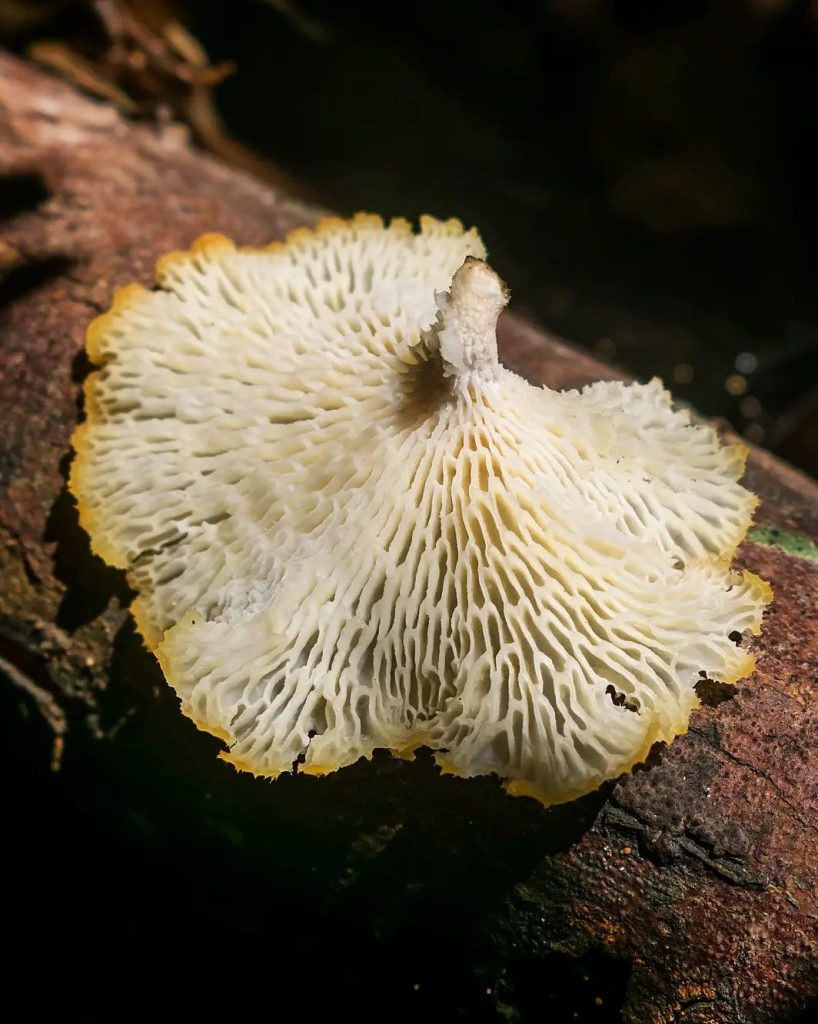
Favolus brasiliensis is a mushroom that seems to be quite common in some warmer parts of the country, but here (South of Brazil) we found them only once so far. It has a very characteristic hymenophore (underside) that’s shaped like honeycombs.
The ones I found were already half dry, since the weather was quite hot, but I collected them to try and satisfy my curiosity. They were very tasty, it’s a shame we haven’t found any more yet.
Irpex rosettiformis
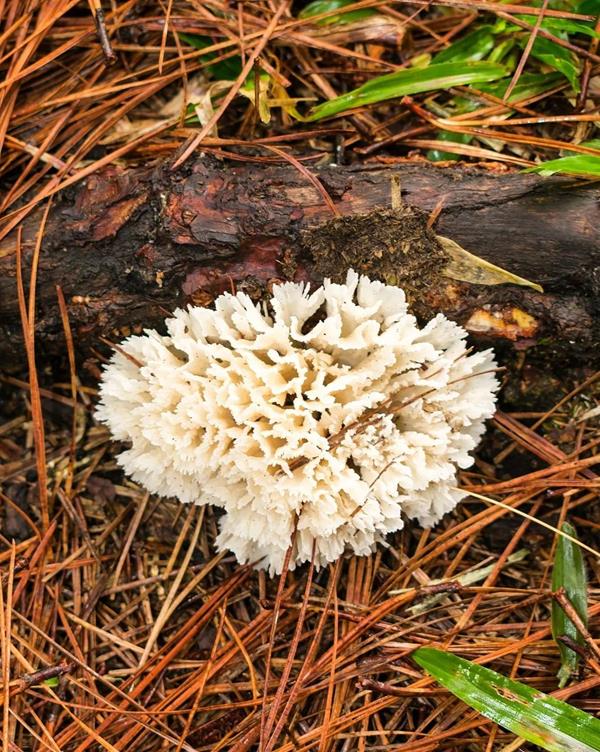
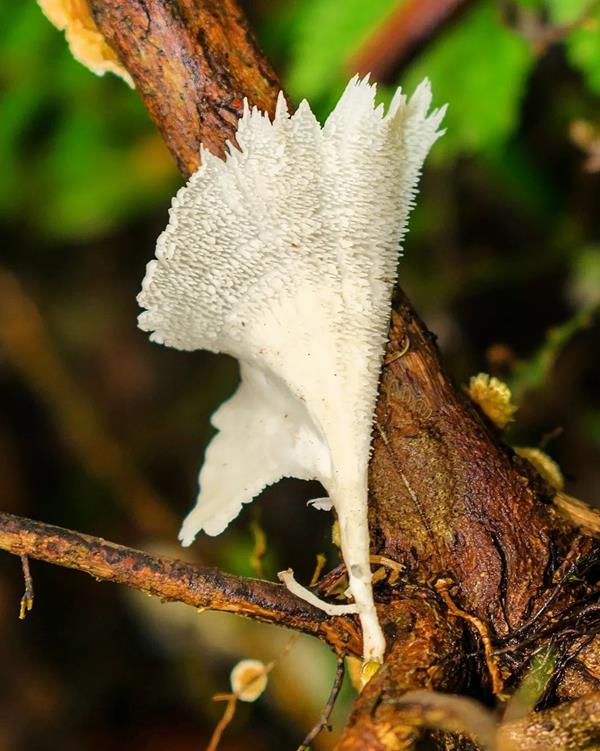
Irpex rosettiformis is a fungus that grows on decaying wood, in the form of small “petals” that can form a rosette (as in the first photo) or it can grow more spread out too. Its hymenophore (underside) has structures that look like small “needles”.
I have only encountered this species a few times and in small quantities, so I have not tried it yet.
Macrolepiota capelariae
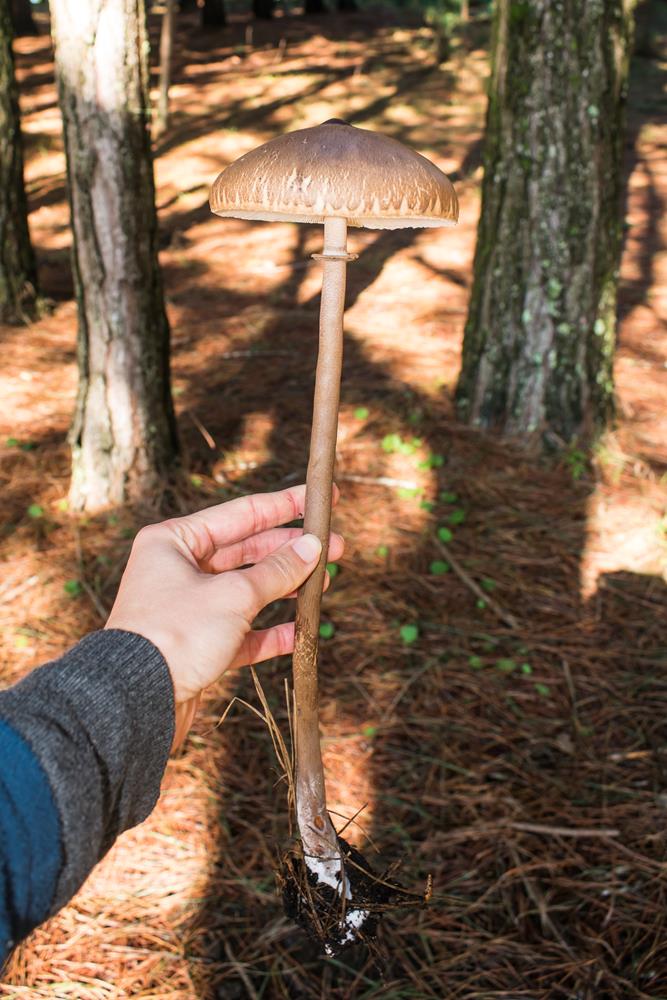
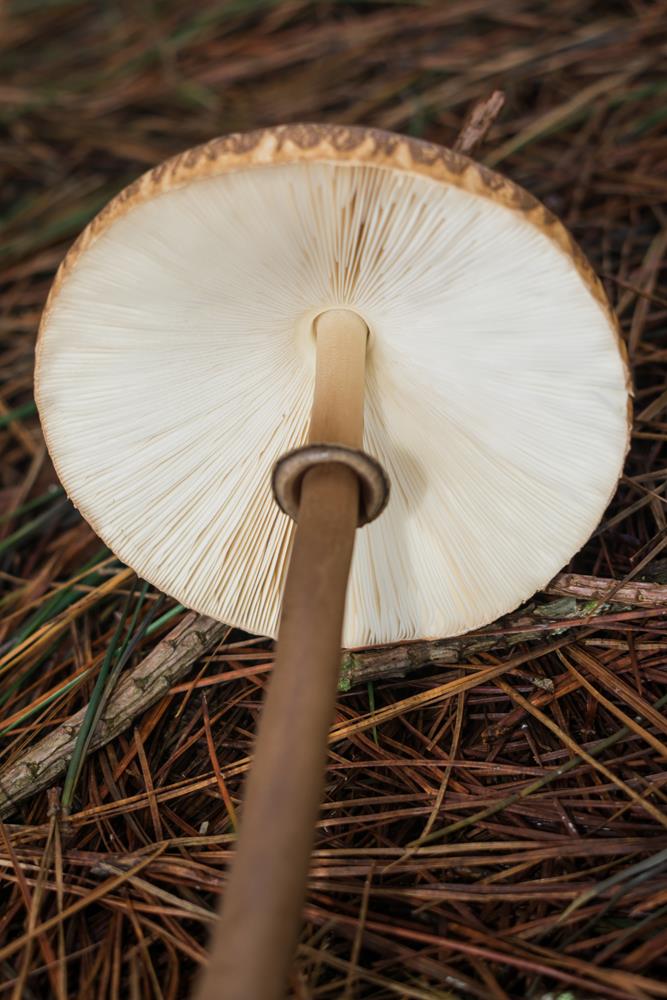
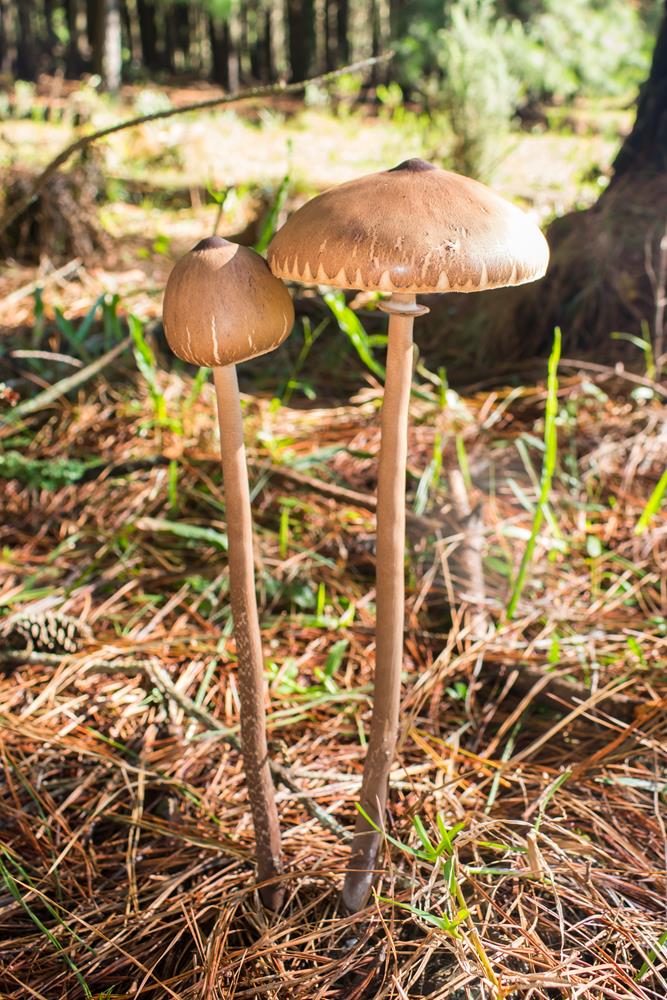
A large mushroom that looks like an umbrella, Macrolepiota capelariae is on average 30 cm tall, but I have also seen a giant 50 cm tall specimen. It’s a Brazilian species of the Parasol mushrooms, as the Macrolepiota genus is commonly known as.
It’s found inside and on the borders of native forests, and also in pine forests (Pinus sp. plantations, that are not native around here). I was only able to confirm their identification recently and I have not yet tasted this species. It grows on the soil.
Lentinus sp.
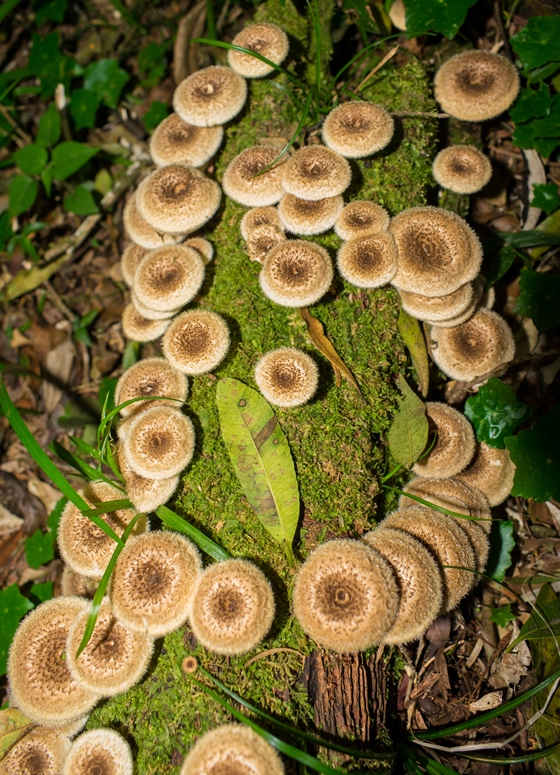
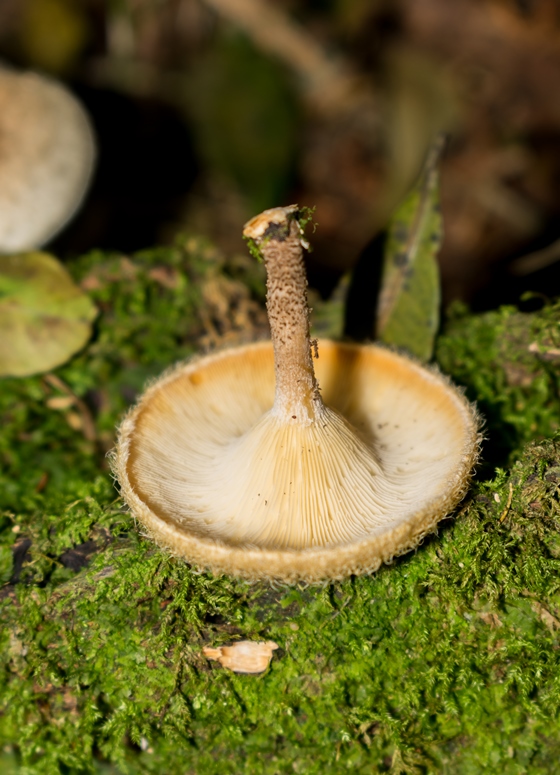
Several species of the genus Lentinus are edible and have similar characteristics, such as a funnel shape and the little “hairs” on the cap. The ones in the photos are Lentinus crinitus, with identification confirmed on iNaturalist.
They have a very good flavor but a very hard and fibrous texture, like leather. They grow on decaying wood. Also known as Fringed Sawgill.
Oudemansiella platensis
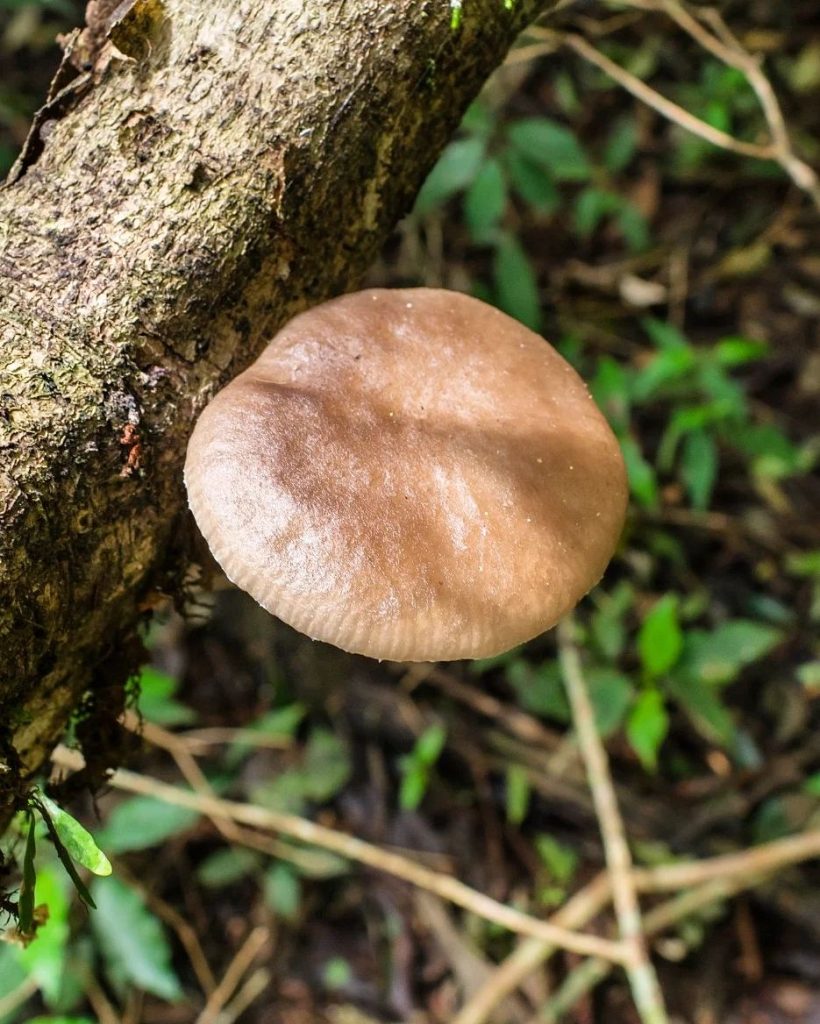
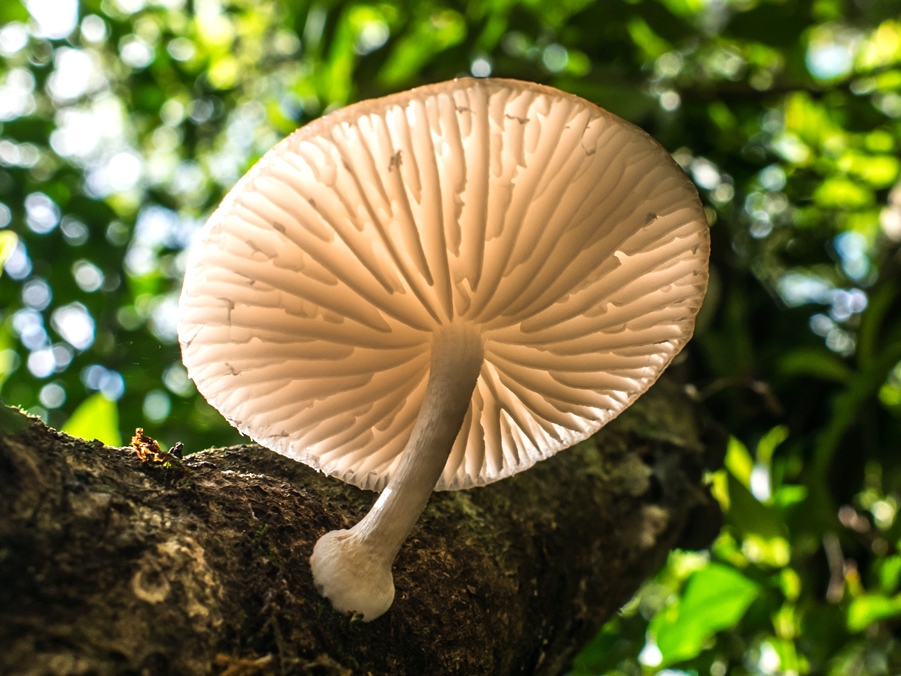
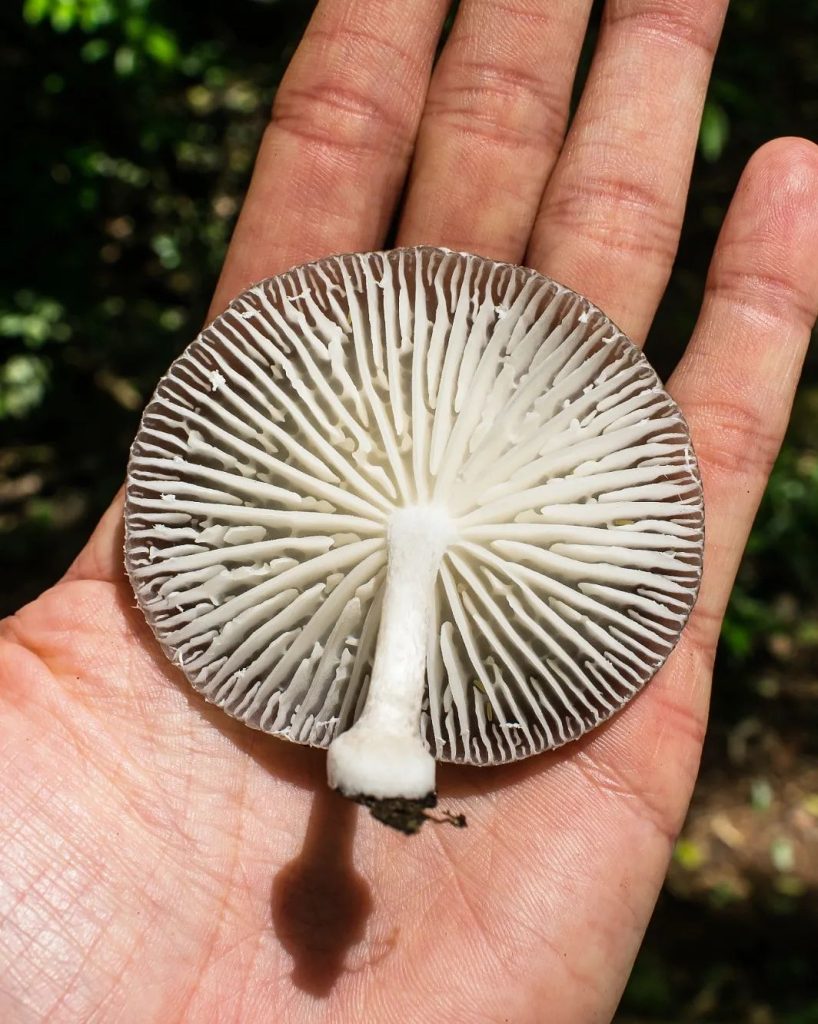
Oudemansiella platensis is an edible mushroom that grows on wood. We usually find them in very small quantities, but we have been lucky once and found many fallen branches filled with them. They are tasty and have a mild flavor.
They have a somewhat fragile texture, and it is difficult to find them at the right time, not too young and not too old and “watery” – any excess moisture makes them very soft. Many other species in this genus are edible, and some are known as “Porcelain fungus”.
Phillipsia domingensis

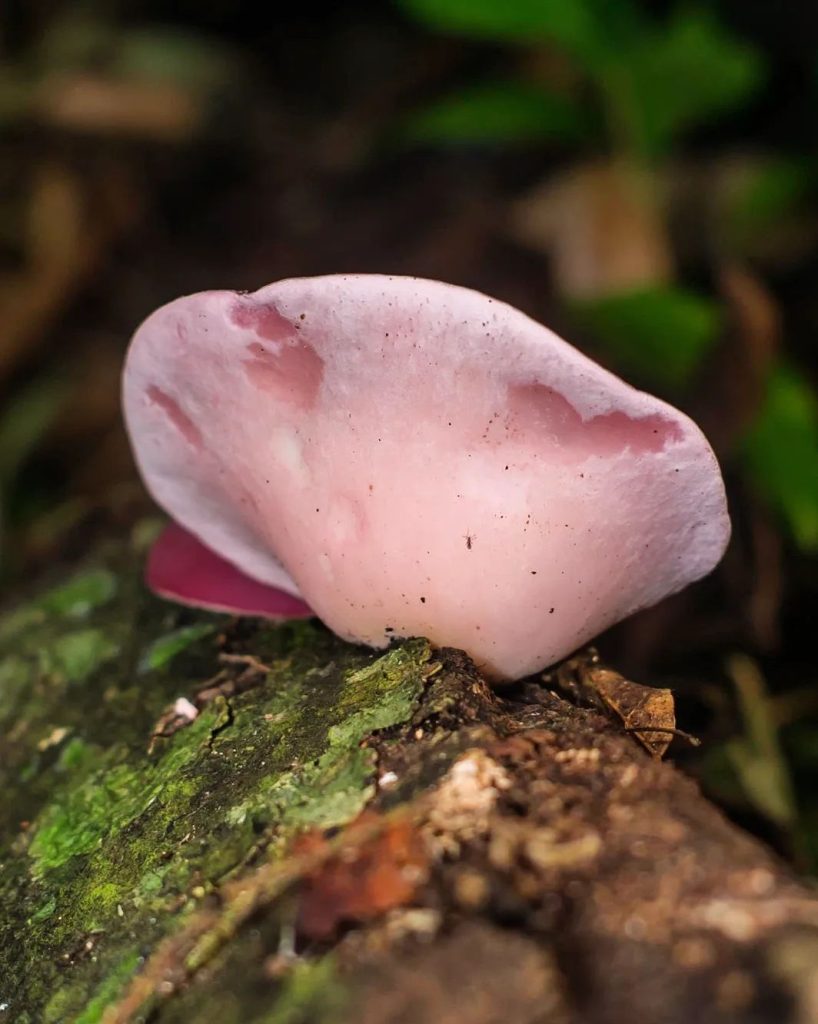
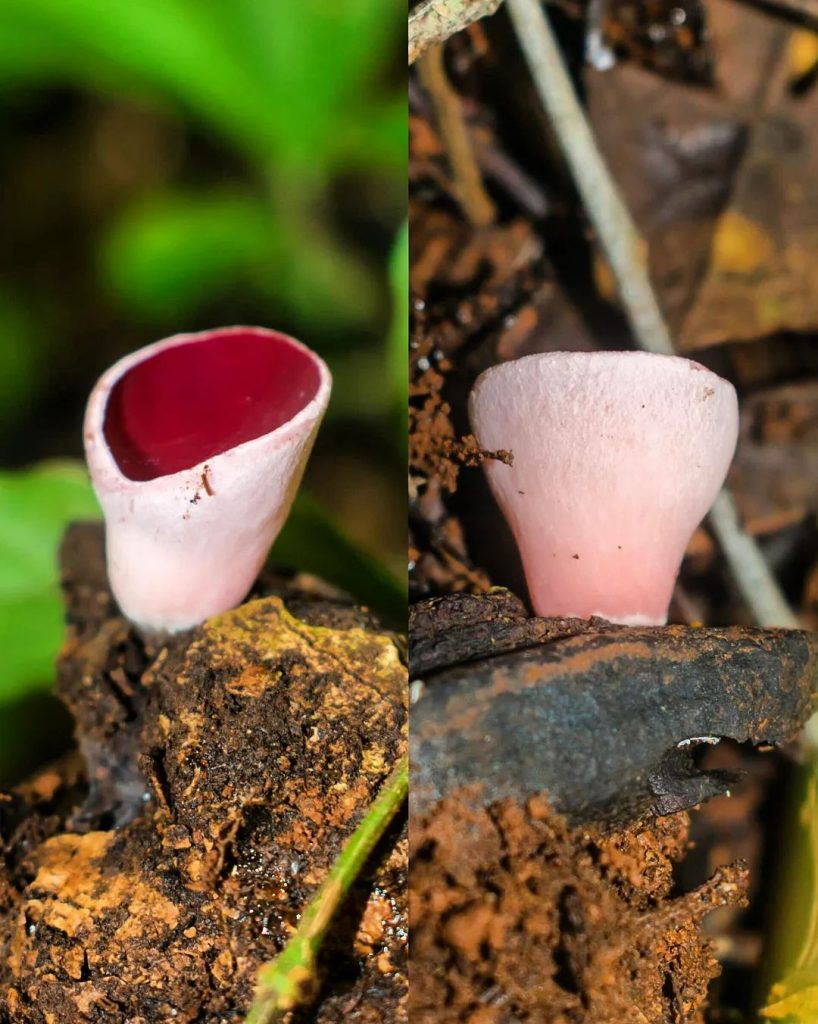
Phillipsia domingensis, a small little “disc” with this beautiful burgundy color. It’s usually 2 to 5 cm in diameter – but I’ve once found a big one measuring 8.5 cm. They grow on wood, usually fallen branches on the forest floor. They have a great texture and are very tasty, it’s a shame they’re so small.
But there have been days when I’ve found several of them in different parts of the forest, so I’ve managed to pick at least half a dozen. They make a delicious little snack.
Boletinellus rompelii

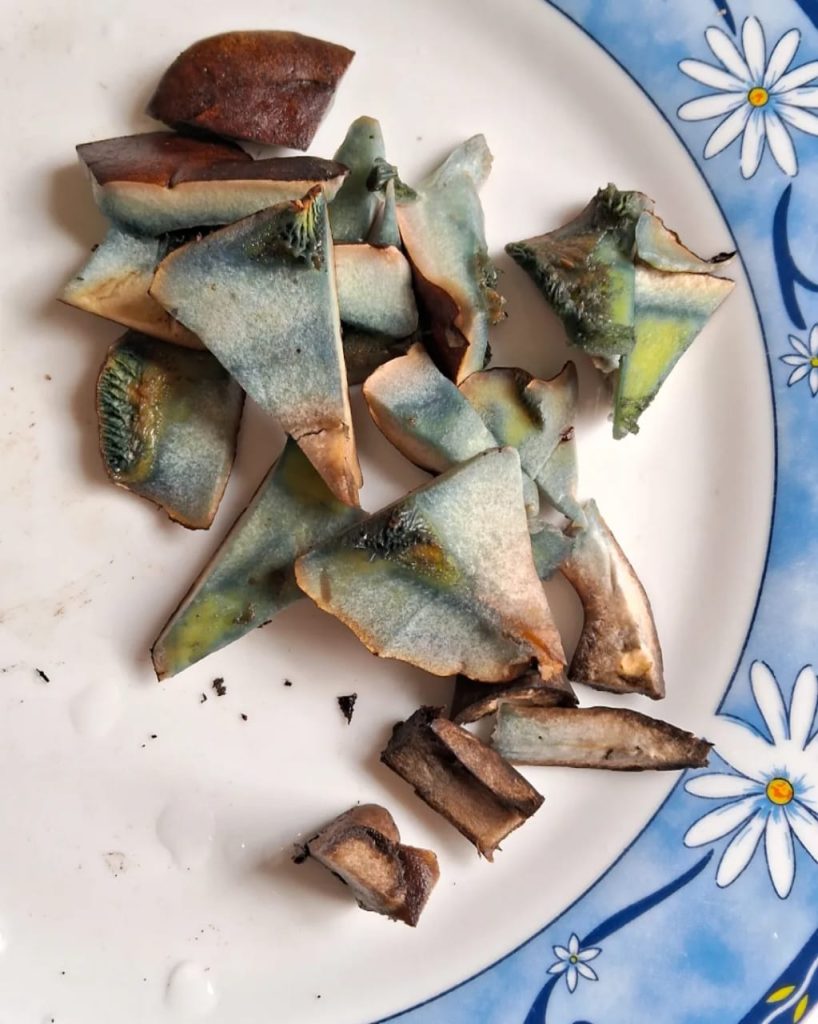
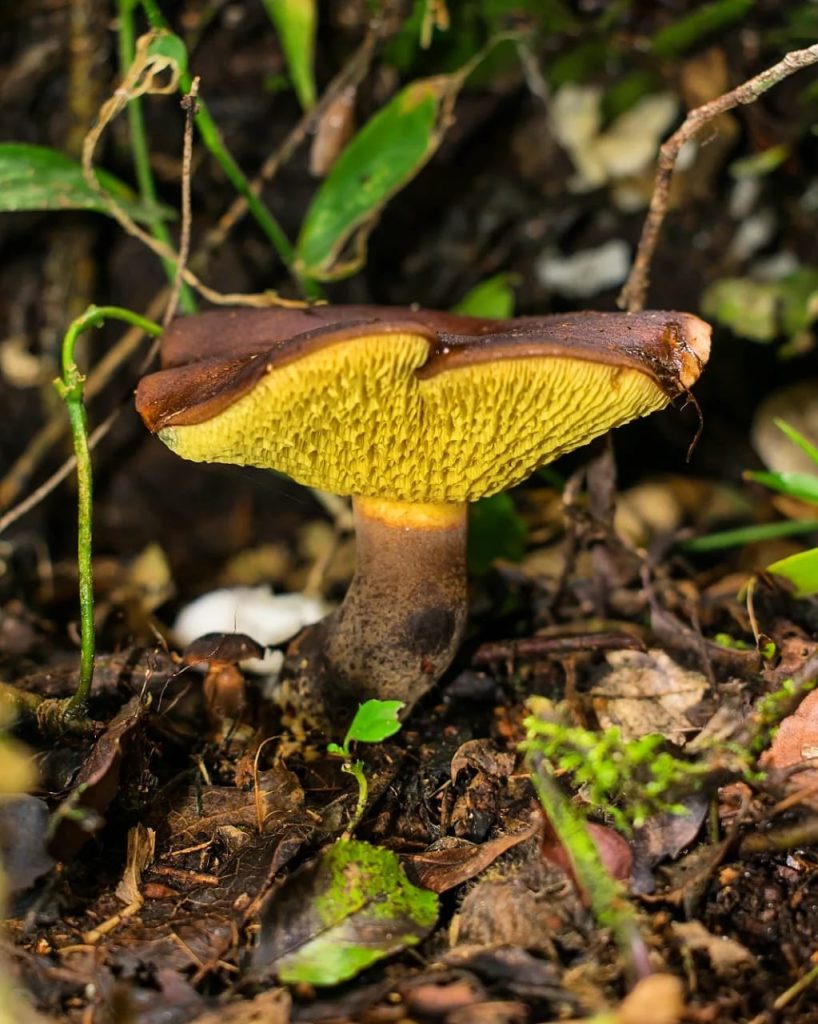
Boletinellus rompelii, a beautiful mushroom with this very characteristic yellow underside, and the fact that they stain blue when cut (you can see it in the photo above).
They are tasty and they grow on the forest floor, usually from Spring to Autumn around here, and there are reports that they are associated with the tree Allophylus edulis.
These photos and information are a starting point for you to learn more about the wild edible mushrooms of the Atlantic Forest. Also known as Atlantic Rainforest, it is one of the most biodiverse biomes in the world and is present in about 15% of the territory of Brazil and it’s where 72% of the population lives – it goes without saying that unfortunately it’s highly threatened.
For those who want more information, there is a very interesting project on iNaturalist called Macrofungos Comestíveis do Brasil (BEM – Brazilian Edible Mushrooms) that currently lists 97 species of mushrooms/macrofungi recognized as edible in our country. They are not only from the Atlantic Forest, but most of the listed species occur in this biome as well.
And for more information about mushroom hunting in Brazil, check out this post.
📸 Pictures made in São Francisco de Paula, Rio Grande do Sul (Serra Gaúcha, South of Brazil).
